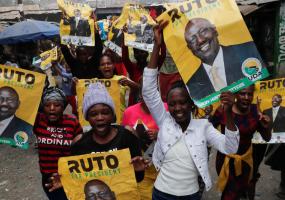Libya's Desert Rebellion: The Lessons of World War II
08 Mar 2011
Andrew Lee Butters writes:
The whipping sandstorms, low visibility, and stray camels make the five-hour car ride from Benghazi to the oil refinery town of Ras Lanuf a tense one even in normal times. But these days there is nothing normal going on in Ras Lanuf, which lies on the front lines of the clashes between Libya's volunteer rebel army and forces loyal to the country's dictator, Colonel Muammar Gaddafi. On Saturday when TIME visited, the gates of Ras Lanuf were guarded by a platoon of opposition irregulars with anti-aircraft guns and recoilless rifles mounted onto the backs of pickup trucks. But calling this a front-line may overstate the level of organization and planning behind the rebel advance. Though opposition forces have been slowly moving west from their stronghold in Benghazi along the about 700-mile coastal highway to Tripoli, the country's capital and the center of Gaddafi's power, Ras Lanuf has changed hands several times. As has Bin Jawad, the next town west down the coastal highway. And looking at the leaderless bands of pick-up trucks gathering at checkpoints to make fresh sorties on government positions with weapons newly acquired from raided government arsenals that they barely know how to use, it's hard to think of this as anything like a conventional army. But what's clear is Libya's desert geography — and Muammar Gaddafi's attempt to violently suppress what was once a peaceful movement — has transformed the country's pro-democracy uprising into the first military campaign of the Arab Spring. And it's also clear the desert is an arena in which people power plays at a disadvantage. Read the rest of Andrew's article in Time magazine.



